Highlights of Berlin, Germany
Highlights of Berlin, Germany
Before the LIU Global Class of 2021 makes its way to Spain, we had a week in London and 10 days in Berlin to study the emergence of the nation-state. That may sound somewhat boring, but it involves a lot of amazing excursions around the cities and an abundance of free time to explore on our own. In London, I felt super comfortable in the city considering I spoke the language and had visited before. Berlin, however, threw me off quite a bit, but fortunately I had a good bit of time to learn to love it. Read below for some of my favorite parts of the city.
The Reichstag and Bundestag
The Reichstag building, but it houses the Bundestag. This clarification is very important to Germans, because they want to distance themselves from the Reichs, or empires (you may be familiar with the Third Reich, aka Nazis). So, to be very clear, the Reichstag building, which was constructed during the Second Reich of the Prussians, houses the German Republic’s Federal Parliament.
Alright, history lesson over.
Anyways, the building is gorgeous, with a mix of Baroque and Renaissance architecture and sleek modern lines added in its renovations in the 1990s. We were able to take an amazing guided tour where we learned a ton about the building and German government, and then we were able to explore the gorgeous dome at the top.
- Jackie examining the Russian graffiti preserved from the second World War.
- Lilli in front of graffiti written by Russian soldiers during the second World War.
- Jackie examining the Russian graffiti preserved from the second World War.
- Students in the German parliamentary chamber.
- Lilli in the German parliamentary chamber.
Fun fact: the giant eagle on the wall in the parliamentary chamber weighs over 2 tons and has a greater square footage than many city apartments.
- Standing in the dome on the roof of the Reichstag building.
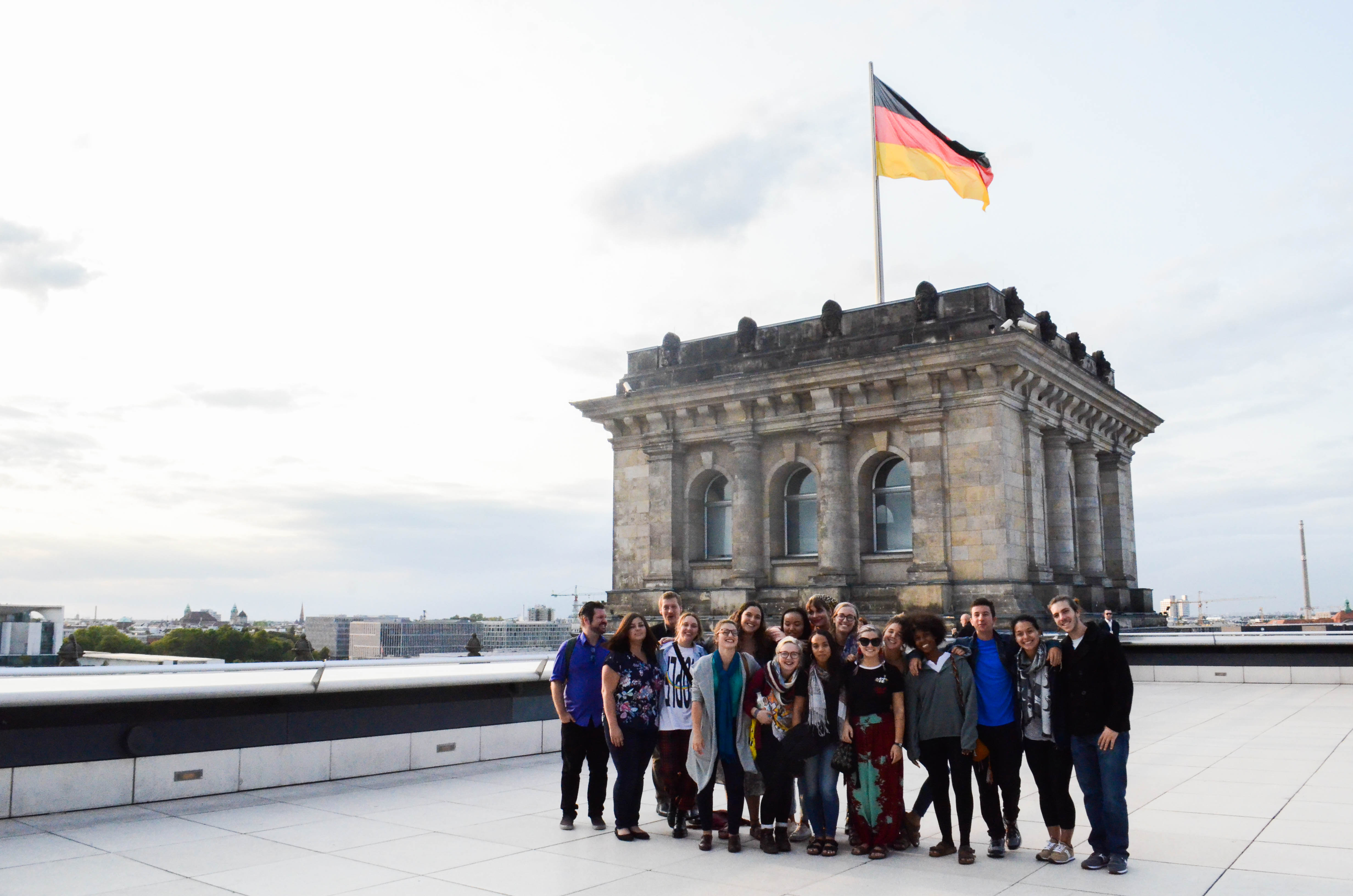
The LIU Global Class of 2021 (minus me because someone had to take an amazing group photo).
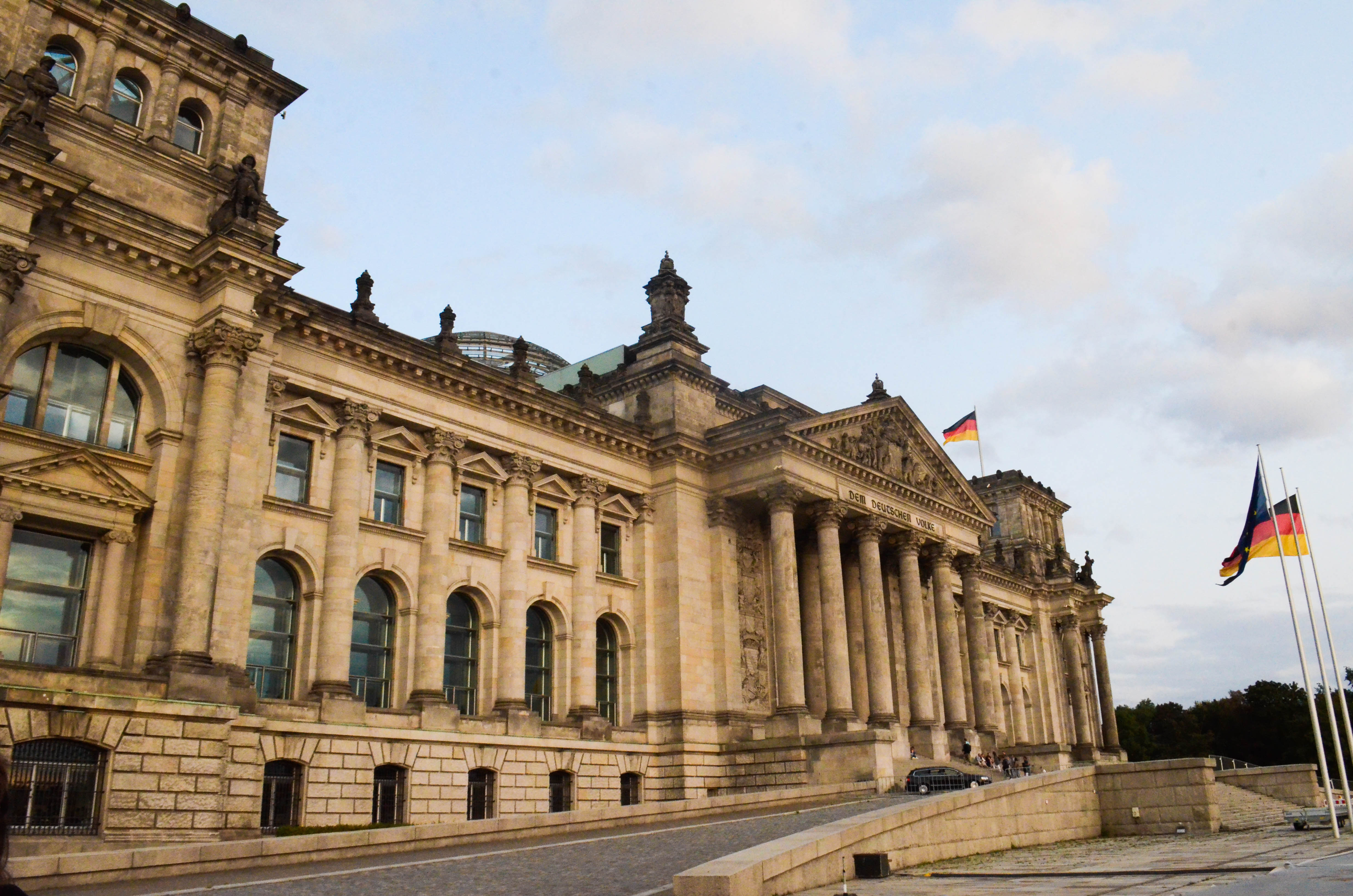
The Berlin Wall Memorial and East Side Gallery
The East Side Gallery’s vibrant murals are what most people first come across when they see images of Berlin, but it is also important to address the history and impact of the Berlin Wall.
My pitifully limited knowledge of the wall that I gleaned from the US education system turned out to be completely and utterly wrong. Go figure. I thought it was simply one wall, and my general idea of the fall of the wall was directly coupled with Ronald Reagan triumphantly declaring, “Mr.Gorbachev, tear down this wall!”
Nope. Not even close.
Turns out good ole Reagan made this statement in West Berlin (the American occupied zone) a whole 2 years before its actual fall, and he said it to a very unenthusiastic crowd of only a couple thousand. Womp womp.
In reality, the wall was not just one wall, but 2 to 3 with a formidable no man’s land called the “death strip” in between. This wall and all of its reinforcements, including round the clock soldiers, claimed an estimated 130 lives of those trying to flee from the Soviet controlled East to the West of the city along with some that were in the wrong place at the wrong time. A tour of a section of the wall and death strip gave us greater insight and context surrounding the almost 30 years that the wall existed.
As for the fall of the wall, it happened suddenly and unexpectedly. On November 9, 1989, due to a flub of words by an East German leader, thousands of East Germans flocked to the wall and together brought it down. East Germany was considered to be a stable nation with a UN seat, embassies, Olympic teams, etc, but it crumbled in seemingly one day.
- The view of the wall from former West Berlin.
- Lilli with some of the portraits of victims of the wall.
- The view of the wall and a watchtower on the former West side of the divide.
- Getting a glimpse through the Western portion of the wall.
- The view of the wall from former West Berlin.
The stories from the time the wall was up are gut wrenching and horrendous, and a poignant example of why walls and division are a horrible idea. It is crucial that we look to history so as not to repeat ourselves, especially in cases such as this.
Now for something a bit happier.
The East Side Gallery is a former section of wall where the government commissioned artists from all over to create murals on parts of the wall. The original murals were done in 1989, and the artists returned in 2009 to refresh the paint before a protective coating was applied. Now it is a beautiful space that a large group of classmates and I enjoyed one late afternoon.
- An image taken in front of the mural titled “Brotherhood Kiss”
- An image taken in front of the iconic mural titled “Brotherhood Kiss”
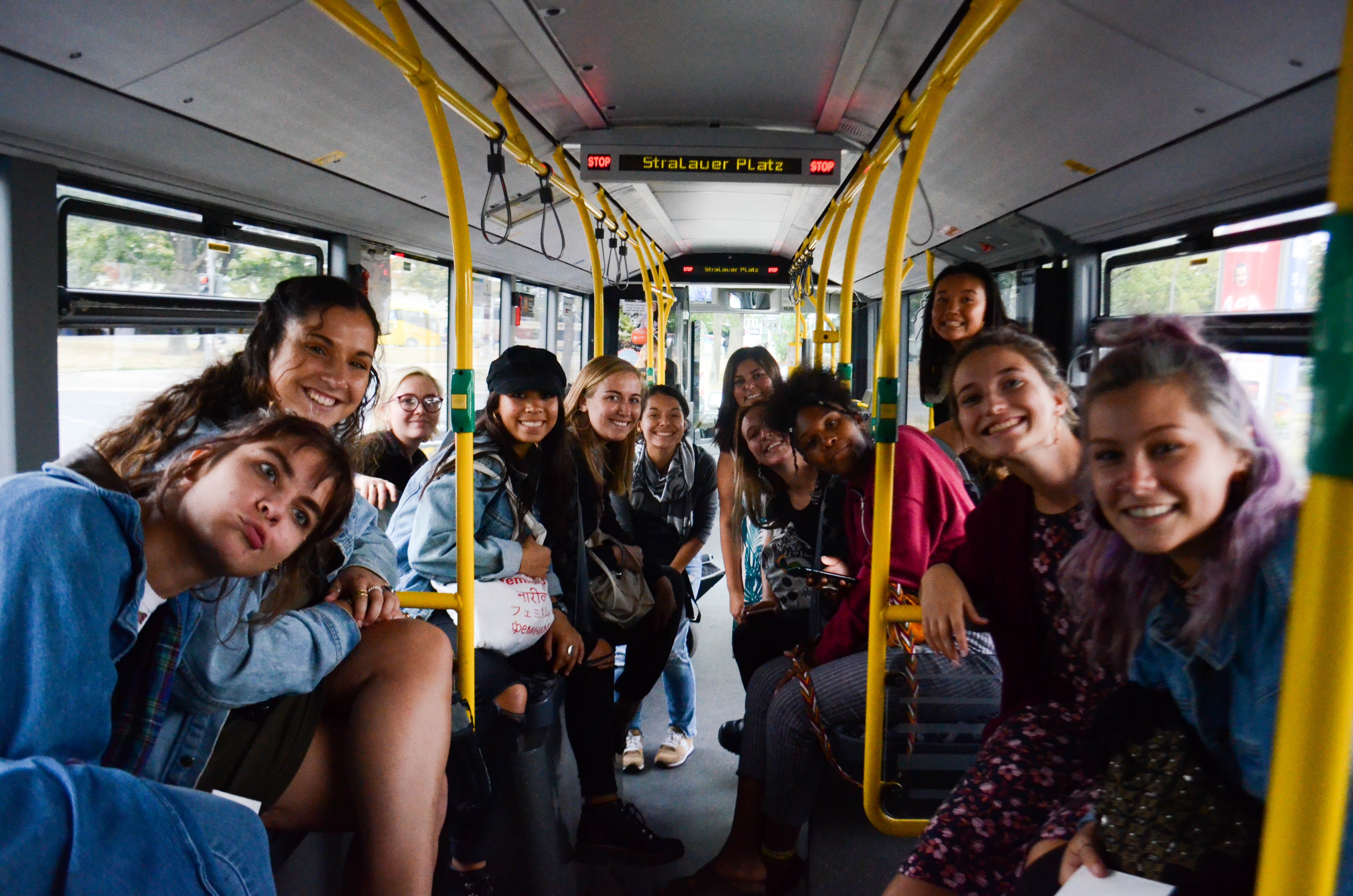
The girls of LIU Global on the bus to the gallery.
- Yep.
Sachsenhausen Concentration Camp
Sorry, back to sad stuff, but I did try to give you a break with the bright photos.
Sachsenhausen was a concentration camp just outside of Berlin. It was not as big as some of the better known camps, such as Auschwitz or Dachau, as it held about 45,000 prisoners at its fullest, but it’s important for another reason.
Sachsenhausen is where the SS and Nazi regime planned the systematic killing of Jews, Homosexuals, Romas, and other groups. They first tested their plans for gas chambers here, and it was chilling and horrifying to hear how many of the truly evil plans that resulted in the deaths of millions originated here.
Now, the camp is largely torn down, as it was used as a Soviet prisoner of war camp after the war and fell into disrepair after due to looting and disuse, but the remnants and recreations aid in allowing visitors to get an idea of the operation of the camp from 1936 to 1945.
- Walking around the former grounds of the camp, where metal rectangles now mark where buildings once stood.
- ‘Arbeit Macht Frei,’ or Work Makes You Free, an outright lie stamped on the main gates of the camp.
The camp was chilling, and the cold, rainy weather enforced the tone of the site. These memorials are definitely difficult to see and process emotionally, but I believe that it is incredibly important to preserve the history, as terrible as it was, so that atrocities like this can be acknowledged and never be repeated.
The Memorial to the Murdered Jews of Europe
Yep, more rough stuff, but this memorial and museum was particularly significant to me. Upon walking up to the memorial, which stands in the middle of a main area of the city, you’re kind of like ‘huh?’
The memorial consists of 2,711 concrete slabs of different heights and levels. It’s definitely difficult to grasp the significance upon first glance, especially because there is little signage and no immediate explanation given. However, if you devote the time and consult some of the staff or guides, you can begin to understand the beauty of the memorial.

The uneven stones are meant to resemble graves and gravestones in Jewish cemeteries. The photo below can give you an idea of what the architect was going for.
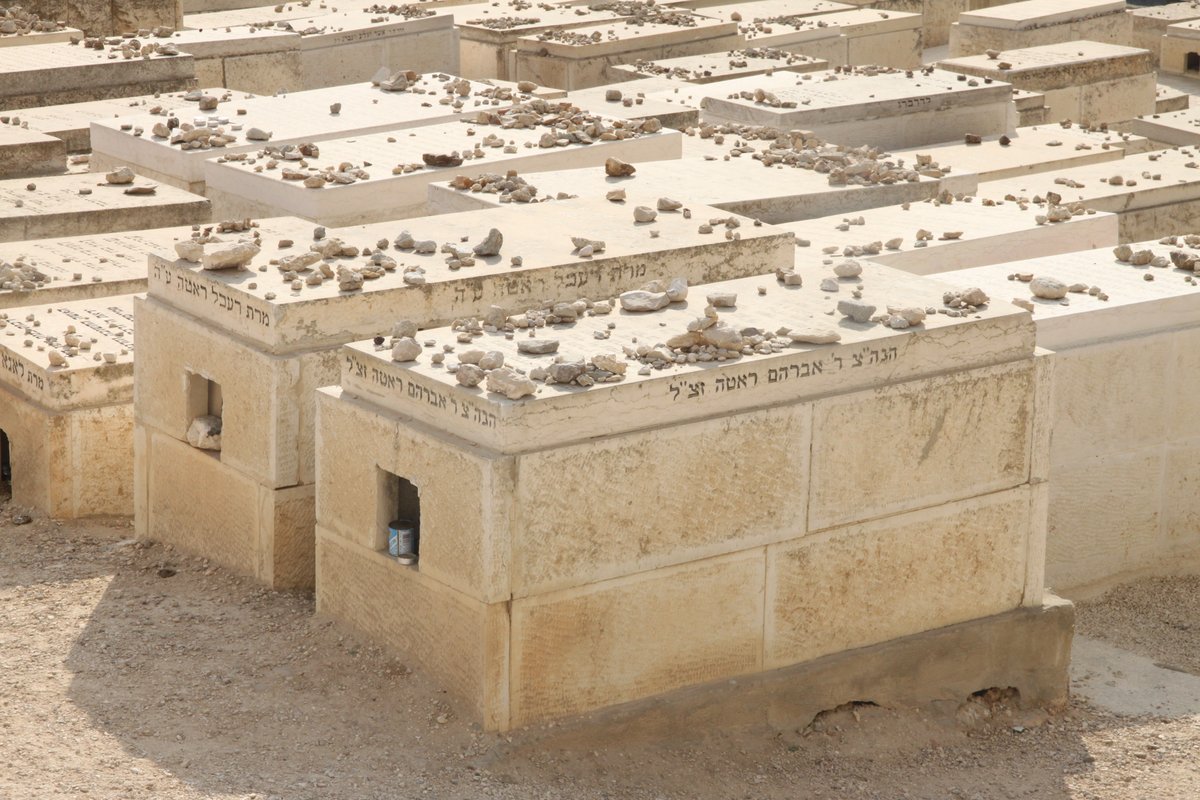
Photo by Peter van der Sluijs.
Furthermore, when you walk through the memorial, it is easy to become disoriented, and to feel trapped as if you’re in a maze. The stones are also imposing and somber in their grayness, and all of these aspects come together to create something much more powerful and interactive than you would believe on first glance.
- A view from inside the stones of the memorial.
The issues with the memorial, however, include vandalism, rampant disrespect, construction defects and controversy, and its abstract nature.
When walking through the memorial, it is easy to see where graffiti has been erased. Unfortunately, it is not uncommon for people to spray paint swaztikas on the memorial, and security monitors the site around the clock to apprehend those looking to disrespect the memorial in this way.
Security also watches for people leaping around and playing in the memorial. It consists of giant blocks not spaced entirely far from each other, so it is not uncommon to see people leaping from block to block, playing hide and seek, and taking photos. This was appalling to my group, and incited a lot of anger, but unfortunately happens all too often. Israeli artist Shahak Shapira took some of the photos taken at the site and changed the background to images from the Holocaust to show the disrespectful nature of some of the images captured there. Her project is titled ‘Yolocaust’ and you can read more here.

As for the construction of the site, many of the stones are already cracking and have to be held together with metal supports. Additionally, the company that supplied the anti-graffiti substance covering the stones also supplied the Zyklon B gas used to gas Holocaust victims. Whoops.
Lastly, many say the abstract nature leaves a lot to be desired and does not truly lend itself to truly memorializing the Jews that lost their lives in the Holocaust.
Below the memorial is a museum and information center that I feel did a very good job of providing information in an interesting and engaging manner. They focused on both large-scale history and individual stories. In one room, they list a singular name on the wall, along with that person’s birth and death years, and tell the story of their death. One paragraph of information said that it would take over 6 continuous years to tell the names and stories of each Jewish life lost in the Holocaust.
This room was particularly meaningful to me because I sat down and closed my eyes to simply listen to the stories, and after only a couple of minutes, I heard my last name.
My eyes flew open, and while the name was spelled differently, it was unmistakeable. Epstein. Epsztejn. Sura Epsztejn, and she died at the age of 21. I was immensely shaken by this, and was further affected by the number of Epsteins in the database they have of those affected. Yes, their were other spellings of the name, but the database held over 12,000 Epsteins.

This experience, like Sachsenhausen, was immensely difficult, but nonetheless incredibly important. This information needs to be witnessed.
Street Art Installations and the Computer Games Museum
Alright, back to something a bit lighter. Thanks for bearing with me if you’ve made it this far. After two days of Holocaust-related activities, we were drained. Our director instructed us to find something lighter to occupy ourselves over the weekend, so my friend group decided on the Computerspielemuseum and street art installations around the city.
At the Computer Game Museum, we read about the history of computer games, from old Ataris to the current X Box. We then lost ourselves in playing old classics such as Frogger, Pong, and Pacman. It was definitely a good change of pace.

After the museum, some of us joined our director in viewing temporary street art installations around the city. Sponsored by Samsung, the installations feature augmented reality featured that were able to be viewed through Samsung phones provided at each location. It was super cool and the art along with the digital amplifications were amazing.
- Portia viewing the installation through the augmented reality on the Samsung device.
- Part of the art installation.
- Part of one of the installations reminiscent of the Statue of Liberty.
- In the installation created by the tape art collective, Tape That.
- Posing in an installation made completely from tape.
- In the Tape That tape art installation.
- In the Tape That tape art installation.
Other Berlin activities included a walking tour led by an Iraqi refugee that provided an interesting perspective on the city, washing ALL of our clothes and moving from room to room due to a bed bug issue in our hostel, and visiting the Hard Rock to get a pin for my collection. Overall, the city is quirky, artsy, hipster-esque, and a true melting pot – all qualities I enjoy. I would recommend stopping in Berlin for a couple of days if you find yourself planning a trip to Germany.
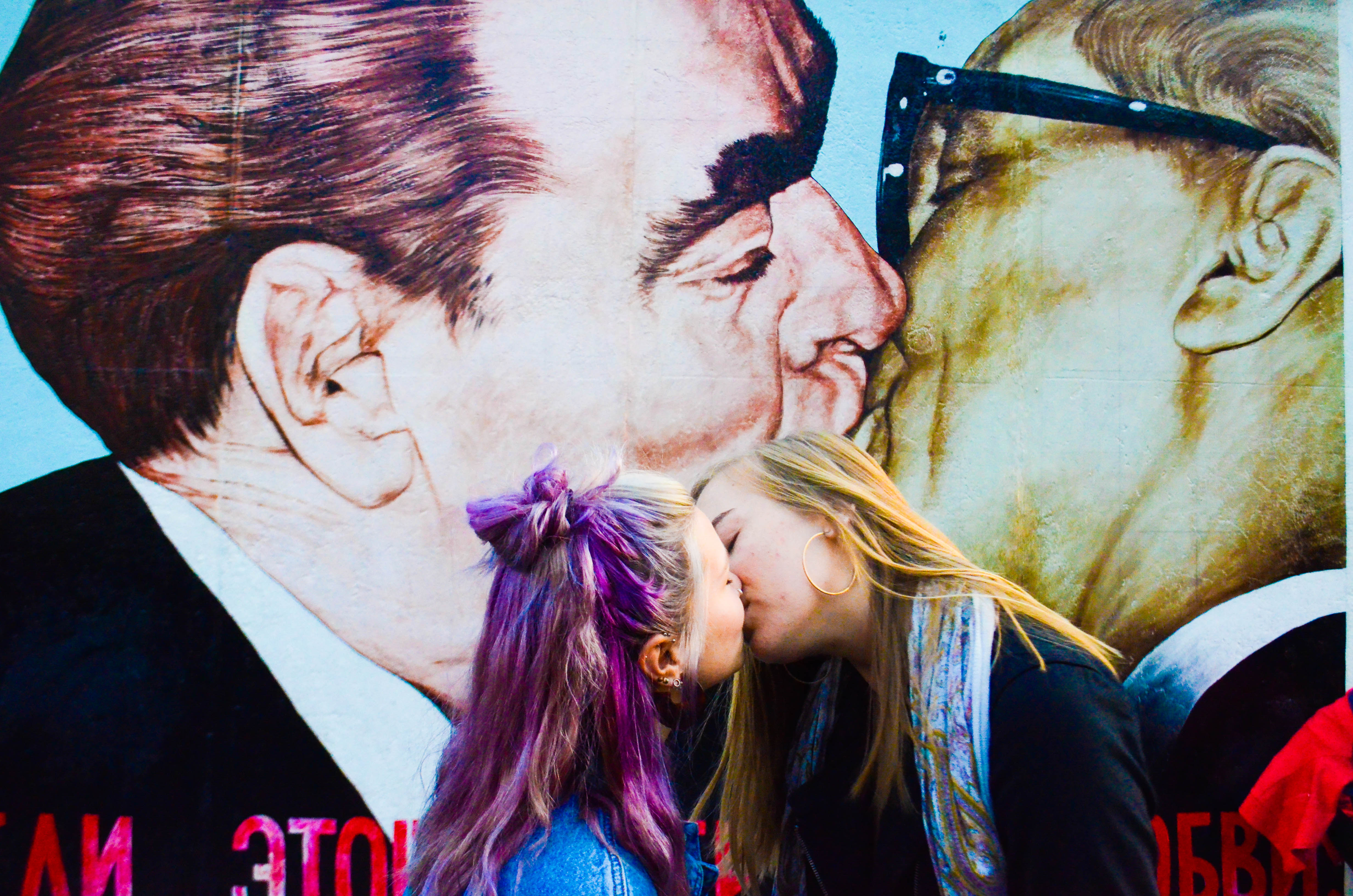
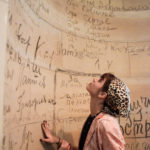
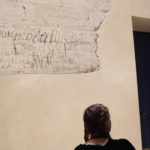
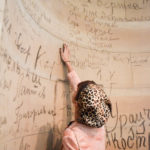
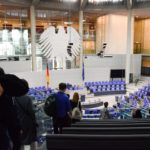
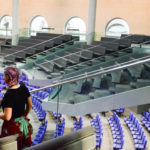
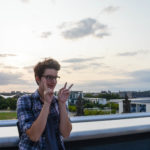
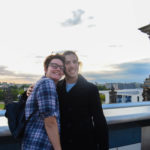
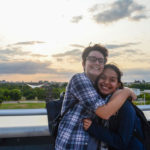
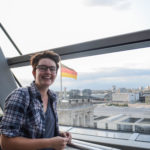
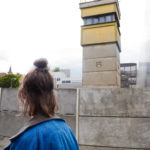
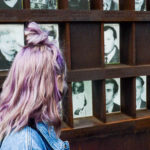
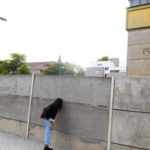
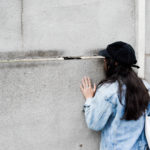
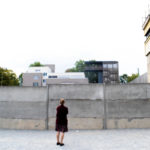

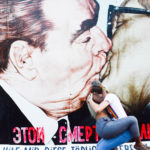



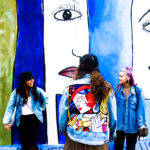
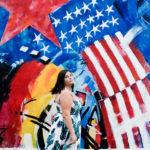
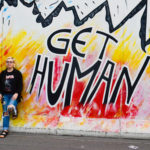
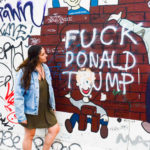
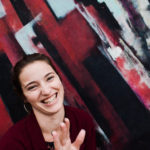
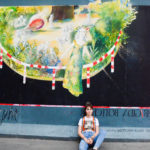
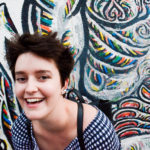
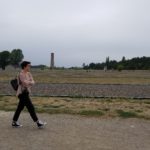
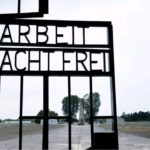
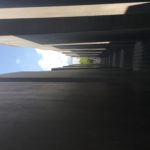
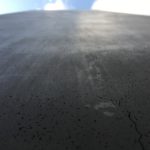
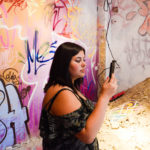
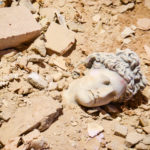
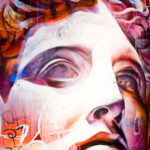
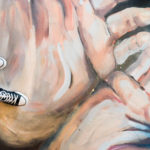
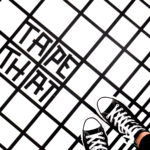
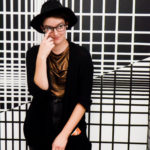
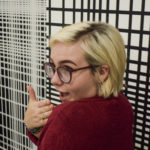
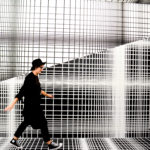
I was late getting to your Berlin experience. What a roller coaster of emotions you went through, but, like you said, important and meaningful. I’m so proud of you and thankful that you have been and still continue to embrace so many parts of the world. Love you!!